Hey there, fellow travelers! You’ve come to the right place if you dream of exploring India’s colors, chaos, and charisma. As an American digital nomad who’s traveled in India for over 4 years, I’m here to spill the beans on the best times to visit this enchanting country for all my fellow globetrotters.
What is the best time to visit India? The best time to visit India is in the winter, from late November to early March. The weather is mild and sunny, with average temperatures ranging from 15-25 degrees Celsius (60-77 degrees Fahrenheit). This is a great time to visit tourist destinations like Agra, Jaipur, Delhi, Mumbai, Varanasi, and Udaipur.
Don’t miss out on this full article because going to a destination at the wrong time of year could mean you miss out. Or you could be wasting your money if your trip gets canceled. I learned the hard way about this when I had to cancel expensive trips to Himachal because of monsoon flooding.
But don’t worry. You can avoid these mistakes by reading about the best times to visit India’s most popular tourist destinations. Then I’ll go month-by-month, sharing the best destinations to visit.
So buckle up, pack your bags, and dive into India’s mesmerizing world.
Planning a trip to India at some point? Check out my free ebook to help you save time and money, and avoid headaches. After +4 years in India, I’ve made plenty of mistakes, and this guide shares what I’ve learned so you can have a smoother trip.
Average Temperatures and Rainfall For India’s Most Popular Destinations
Here’s a quick chart with average temperature and rainfall for the best destinations in India.
| Destination | Jan | Feb | Mar | Apr | May | Jun | Jul | Aug | Sep | Oct | Nov | Dec |
| Delhi | 15°C (59°F) | 18°C (64°F) | 23°C (73°F) | 29°C (84°F) | 37°C (99°F) | 42°C (108°F) | 35°C (95°F) | 30°C (86°F) | 25°C (77°F) | 20°C (68°F) | 15°C (59°F) | 23°C (73°F) |
| 12 mm (0.47 in) | 11 mm (0.43 in) | 13 mm (0.51 in) | 19 mm (0.75 in) | 41 mm (1.61 in) | 135 mm (5.31 in) | 176 mm (6.93 in) | 114 mm (4.53 in) | 86 mm (3.39 in) | 35 mm (1.38 in) | 10 mm (0.39 in) | 12 mm (0.47 in) | |
| Mumbai | 26°C (79°F) | 28°C (82°F) | 31°C (88°F) | 34°C (93°F) | 37°C (99°F) | 29°C (84°F) | 27°C (81°F) | 27°C (81°F) | 28°C (82°F) | 29°C (84°F) | 27°C (81°F) | 23°C (73°F) |
| 120 mm (4.72 in) | 70 mm (2.76 in) | 65 mm (2.56 in) | 35 mm (1.38 in) | 10 mm (0.39 in) | 1 mm (0.04 in) | 0 mm (0.00 in) | 0 mm (0.00 in) | 1 mm (0.04 in) | 15 mm (0.59 in) | 70 mm (2.76 in) | 120 mm (4.72 in) | |
| Leh (Ladakh) | -3°C (27°F) | -2°C (28°F) | 4°C (39°F) | 11°C (52°F) | 16°C (61°F) | 21°C (70°F) | 22°C (72°F) | 18°C (64°F) | 11°C (52°F) | 4°C (39°F) | -2°C (28°F) | 5°C (41°F) |
| 1 mm (0.04 in) | 8 mm (0.3 in) | 11 mm (0.4 in) | 9 mm (0.4 in) | 9 mm (0.4 in) | 4 mm (0.2 in) | 15 mm (0.6 in) | 15 mm (0.6 in) | 9 mm (0.4 in) | 8 mm (0.3 in) | 4 mm (0.2 in) | 5 mm (0.2 in) | |
| Rajasthan | 22°C (72°F) | 25°C (77°F) | 30°C (86°F) | 35°C (95°F) | 40°C (104°F) | 38°C (100°F) | 32°C (90°F) | 28°C (82°F) | 24°C (75°F) | 22°C (72°F) | 20°C (68°F) | 12°C (54°F) |
| 3 mm (0.12 in) | 2 mm (0.08 in) | 5 mm (0.20 in) | 10 mm (0.39 in) | 15 mm (0.59 in) | 25 mm (0.98 in) | 30 mm (1.18 in) | 25 mm (0.98 in) | 15 mm (0.59 in) | 10 mm (0.39 in) | 5 mm (0.20 in) | 3 mm (0.12 in) | |
| Kolkata | 27°C (81°F) | 29°C (84°F) | 32°C (90°F) | 35°C (95°F) | 39°C (102°F) | 38°C (100°F) | 32°C (90°F) | 28°C (82°F) | 25°C (77°F) | 23°C (73°F) | 21°C (70°F) | 22°C (72°F) |
| 142 mm (5.59 in) | 112 mm (4.41 in) | 127 mm (5.00 in) | 142 mm (5.59 in) | 216 mm (8.50 in) | 305 mm (12.01 in) | 279 mm (11.02 in) | 216 mm (8.50 in) | 142 mm (5.59 in) | 112 mm (4.41 in) | 127 mm (5.00 in) | 142 mm (5.59 in) | |
| Kerala | 30°C (86°F) | 32°C (90°F) | 34°C (93°F) | 33°C (91°F) | 32°C (90°F) | 28°C (82°F) | 27°C (81°F) | 28°C (82°F) | 30°C (86°F) | 32°C (90°F) | 30°C (86°F) | 25°C (77°F) |
| 5 mm (0.21 in) | 8 mm (0.32 in) | 40 mm (1.6 in) | 105 mm (4.16 in) | 159 mm. (6.2 in) | 260 mm (10.2 in) | 224 mm (8.8 in) | 229 mm (9 in) | 186 mm (7.2 in) | 196 mm (7.7 in) | 98.3 mm (3.8 in) | 25.3 mm (1.0 in) | |
| Goa | 32°C (90°F) | 33°C (91°F) | 34°C (93°F) | 33°C (91°F) | 32°C (90°F) | 28°C (82°F) | 27°C (81°F) | 28°C (82°F) | 30°C (86°F) | 32°C (90°F) | 30°C (86°F) | 27°C (81°F) |
| 10 mm (0.39 in) | 15 mm (0.59 in) | 35 mm (1.38 in) | 50 mm (1.97 in) | 75 mm (2.95 in) | 250 mm (9.84 in) | 300 mm (11.81 in) | 250 mm (9.84 in) | 150 mm (5.91 in) | 50 mm (1.97 in) | 15 mm (0.59 in) | 10 mm (0.39 in) | |
| Varanasi | 24°C (75°F) | 26°C (79°F) | 30°C (86°F) | 34°C (93°F) | 38°C (100°F) | 36°C (97°F) | 32°C (90°F) | 28°C (82°F) | 25°C (77°F) | 23°C (73°F) | 21°C (70°F) | 24°C (75°F) |
| 3 mm (0.12 in) | 5 mm (0.20 in) | 10 mm (0.39 in) | 15 mm (0.59 in) | 30 mm (1.18 in) | 50 mm (1.97 in) | 75 mm (2.95 in) | 90 mm (3.54 in) | 80 mm (3.15 in) | 75 mm (2.95 in) | 50 mm (1.97 in) | 30 mm (1.18 in) | |
| Bangalore | 27°C (81°F) | 29°C (84°F) | 32°C (90°F) | 35°C (95°F) | 37°C (99°F) | 34°C (93°F) | 31°C (88°F) | 28°C (82°F) | 26°C (79°F) | 24°C (75°F) | 22°C (72°F) | 27°C (81°F) |
| 25 mm (0.98 in) | 30 mm (1.18 in) | 50 mm (1.97 in) | 75 mm (2.95 in) | 125 mm (4.92 in) | 150 mm (5.91 in) | 125 mm (4.92 in) | 100 mm (3.94 in) | 75 mm (2.95 in) | 50 mm (1.97 in) | 30 mm (1.18 in) | 25 mm (0.98 in) | |
| Chennai | 30°C (86°F) | 32°C (90°F) | 34°C (93°F) | 36°C (97°F) | 38°C (100°F) | 36°C (97°F) | 34°C (93°F) | 30°C (86°F) | 28°C (82°F) | 26°C (79°F) | 24°C (75°F) | 30°C (86°F) |
| 100 mm (3.94 in) | 125 mm (4.92 in) | 150 mm (5.91 in) | 200 mm (7.87 in) | 300 mm (11.81 in) | 350 mm (13.78 in) | 300 mm (11.81 in) | 250 mm (9.84 in) | 200 mm (7.87 in) | 150 mm (5.91 in) | 125 mm (4.92 in) | 100 mm (3.94 in) |
Read more: The Best Time To Visit South India
The Best Times to Visit India’s Popular Destinations
My dear friends, India is a country that lures you with its bewitching charm. Its rich tapestry of cultures, traditions, and landscapes captivates hearts worldwide. But before you embark on this unforgettable journey, timing is everything.
What’s The Best Time To Visit Delhi?
Ah, Delhi – the bustling capital city where history whispers in your ear while modernity buzzes around you.
For my fellow Americans and Europeans, the best time to explore this ancient wonder is from October to March. The weather is cooler, making it easier to roam around the marvelous Red Fort or admire the intricate carvings at Humayun’s Tomb.
But beware, the unforgiving sun might turn you into a human barbecue during May and June! India’s heat waves are getting hotter year by year too.
I went to Delhi in May and experienced the brutal heat. I could only enjoy tourist sites in the morning and evening, yet I still tried to make due and did an epic street food tour. If you try this, take the metro for air-conditioned breaks from place to place.
- Best Times To Visit Delhi: October to Match
- Worst Times To Visit Delhi: May and June
- Must-See Events: Lohri, India’s Bonfire Festival is in mid-January
- Highlights: The Red Fort, Humayun’s Tomb, India Gate, & Street Food
- Pro Tip: Head into Old Delhi to try Mughal food at Karim’s. I tried the Nahari (stewed lamb) and almost passed out from the amazing flavors.
Read more: How To Avoid Mosquito Season When Traveling To New Delhi
What’s The Best Time to Visit Mumbai?
Welcome to Mumbai, the city that never sleeps! To avoid the monsoon madness, you’ll want to head here between November and February as a foreign traveler. Stroll along the iconic Marine Drive or take a peek into the glamorous world of Bollywood.
However, during the monsoon season from June to September, getting caught in a Mumbai downpour might seem like a wild adventure, but trust me, it’s better to stay dry.
I visited Mumbai in April, and it was getting pretty hot, but I still had a great time. I tried to hit the main spots like the Gateway of India early. I got scorched while visiting the Elephanta Caves since the boat ride doesn’t have air-con. Marine Drive gets decent wind off the bay, though, so it’s a nice walk in the morning or night.
- Best Times To Visit Mumbai: November to February
- Worst Times To Visit Mumbai: June to September
- Must-See Events: Ganesh Chaturthi is the main festival in Mumbai, and it’s in mid-September. It is complete with locals carrying the elephant god Ganesh around.
- Highlights: Elephanta Caves, Gateway of India, Marine Drive, & Street Food at Juhu Beach
- Pro Tip: Stay in the Fort area. It’s cheaper than Colaba, yet you can walk or take taxis to the main destinations like the Gateway of India or Marine Drive.
Want to visit Mumbai from home? Check out the best 360-degree virtual reality tours of Mumbai
What’s the Best Time To Visit the Himalayas in India?
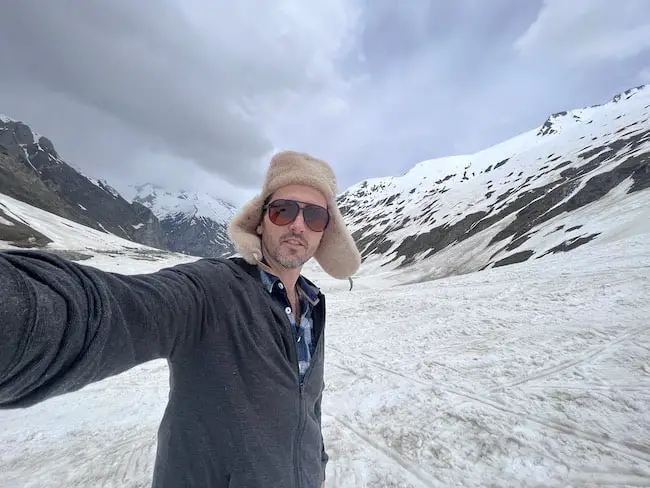
Calling all my fellow nature enthusiasts – the Himalayas beckon you! You can visit the snowcapped peaks of Jammu, Kashmir, and Ladakh for unforgettable alpine memories. Hike the flowering meadows and summit the peaks to view slumbering mountains that pilgrims have visited for centuries.
The best time to experience the breathtaking beauty of these mountainous areas is from June to July while the summer is in full swing. Due to the high altitudes, the passes sometimes won’t open until the temperatures rise at this time.
You can trek through picturesque trails, get lost in meditation at serene monasteries, and experience the magic of snowfall during the winter months. But be cautious from December to February; the chill might leave you shivering like a leaf.
I visited Srinagar in June and Leh, Ladakh in July, which was the perfect time. It was still a bit cold. You’ll need a light jacket (sometimes a heavy one if it rains). You can buy jackets on the street here for cheap. But the highways were open, and it was epic.
- Best Times To Visit the Himalayas: May to July
- Worst Times To Visit Himalayas: December to February
- Must-See Events: Hemis Festival is organized in June to celebrate the birthday of the founder of Tantric Buddhism. Head to Ladakh to see monks dressed in colorful robes and masks while performing a beautiful dance.
- Highlights: Rent a houseboat on Nigeen Lake in Srinagar, Walk the central market in Leh
- Pro Tip: Taxis are expensive, and there’s no Uber here, so budget more for transport. If you have time, take shared cabs to save. You must also get a SIM card for these states, so prep with an eSIM. Look out for monsoon warnings as well.
Read more: Should You Actually Not Travel To India? Here Are The Reasons To Not Visit India
What’s the Best Time To Visit Rajasthan?
To my new travel friends, let’s explore the cultural wonders of the desert of Rajasthan!
For Indian travelers, from October to March, the vibrant festivities, intricate palaces, and golden deserts will leave you awe-inspired. As a foreign traveler, you’ll love this time too, as the temperature drops to a more manageable level.
However, if you visit during May and June, you’ll probably wonder if you’ve been transported to the sun’s surface.
I visited Jaipur in May, and it was rough. I walked to the top of the Amber Fort like a marathon. Temps were over 100 degrees Fahrenheit (+40 degrees Celsius). I survived but paid more for taxis because I was desperate to escape the heat. I stayed at a homestay with an amazing air-con and a once-royal family, which was a highlight.
- Best Times To Visit the Rajasthan: October to March
- Worst Times To Visit Rajasthan: December to February, June to August
- Must-See Events: The Pushkar Camel Fair runs for 5 days in October or November, and you can see the world’s biggest camel and livestock trading fair. Great for photographers!
- Highlights: Amber Palace, City Palace, Elephants, Hawa Mahal
- Pro Tip: Splurge on the premium tour of the City Palace to get access to some of the coolest rooms I’ve ever seen. This is the palace of the rulers of Jaipur and there’s a room covered in mirrors, and the other one’s completely blue. It’s expensive but worth it for the service and Instagram-worthy spots.
Read more: The Best Places for Photography in India
What’s the Best Time To Visit Kolkata?
Are you craving some cultural indulgence? Then Kolkata is your go-to destination from November to February. The pleasant weather lets you relish the city’s artistic side, from grand colonial architecture to soul-stirring music and dance performances.
Avoid visiting from March to June; the intense heat might make you long for an iceberg to cuddle.
I came in October, and the temps were hot but not terrible. Kolkata has a solid metro, and I was nearby to explore the city via air-con. I also had a $350 Airbnb with air-con out in the suburbs but the metro made it manageable.
- Best Times To Visit Kolkata: November to February
- Worst Times To Visit Kolkata: March to June
- Must-See Events: Durga Puja is the largest West Bengal festival in September or October. It honors Mother Durga, and you’ll see plenty of festivities surrounding blue-faced female gods holding men’s heads in her arms.
- Highlights: Victoria Memorial, Howrah Bridge, oldest Indian history museum
- Pro Tip: Take the street food tour by A Chef’s Tour to sample dishes from local hotspots. Each destination had over 100 years of history.
Read more: Does India Celebrate Christmas?
What’s the Best Time To Visit Kerala?
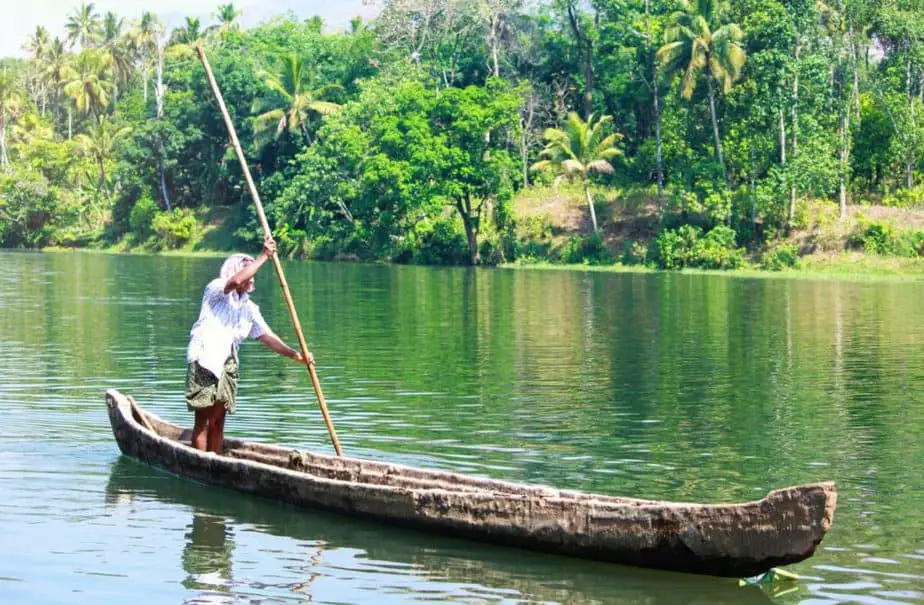
Kerala’s charm is irresistible, and is a great place for travelers new to India to start. There’s a bit less of that iconic Indian chaos here so you could start in the oceanside city of Kochi.
From September to March, the backwaters, tea plantations, and pristine beaches welcome you with open arms. Embrace the laid-back vibes and immerse yourself in the enchanting landscapes.
But remember, from June to August, Kerala’s monsoons could put Noah’s Ark to shame.
My mom, aunt, and I visited in April, which was manageable even for us wimpy foreigners. The ocean breezes make it manageable. I suggest staying in the Fort Kochi area, and we had a $ 50-per-night first-class hotel with a solid pool. You’ll want to try some great oceanside restaurants in the area.
- Best Times To Visit Kerala: September to March
- Worst Times To Visit Kerala: June to August
- Must-See Events: Onam is the largest festival in Kerala, held in August and September for 10 days. Come to see colorful costumed dancing, boat races, and a parade of elephants dressed to the nines.
- Highlights: Backwater trip, Fort Kochi walks, Ferry ride
- Pro Tip: Beef is an option with the large Christian population, but I wouldn’t recommend it. I’ve never had decent beef in India, yet the seafood here is amazing.
What’s the Best Time To Visit Goa?
Time to answer: When should I visit Goa? Goa is the ultimate budget-friendly beach destination for you between November and March. Picture this: golden beaches, palm trees swaying to the music, and the azure waters of the Arabian Sea inviting you for a dip. Plus, all the live music and parties until early morning!
But your beach party might become a mud wrestling match during the June to September monsoon season as Goa gets more rain than most of India.
I stayed in Goa from January to April on a couple of trips. I went without air-con in April and managed but I wouldn’t recommend it for a new traveler. Check out Arambol for great nightlife options and a chill vibe. Or Morjim is even quieter, and I found an Airbnb for less than $400 per month with AC, a kitchen, and a relaxed porch.
- Best Times To Visit Goa: November through March
- Worst Times To Visit Goa: June through September
- Must-See Events: For 40 days in February and March, Goa Carnival will have you dancing alongside colorful floats, costumes, and dances. Goa has many Christians, and this festival has been celebrated for over 500 years.
- Highlights: Arambol’s live music, coworking spaces, Dudhsagar waterfall, watersports
- Pro Tip: Avoid New Year’s for fewer crowds and better prices.
Read more: Common Tourist Scams in Goa
What’s the Best Time To Visit Varanasi?

For my fellow travelers seeking spiritual enlightenment, Varanasi is calling you from October to March. This sacred city on the banks of the Ganges offers a glimpse into ancient rituals and a chance to find inner peace.
Yet, the scorching months of May and June might test your spiritual resolve with their relentless heat.
My mom and aunt and I went in April, and the temperatures were getting hot. We managed with an air-conditioned room no the Ganges right in the heart of the alleys. You’re in the shade often with the historic winding alleys. But the rooms are older so the air-con was a bit weak.
- Best Times To Visit Varanasi: October to March
- Worst Times To Visit Varanasi: May and June
- Must-See Events: Ganga Mahotsav is a festival honoring Mother Ganga, the sacred river for Hindus. For 5 days in October and November, you’ll see even more pilgrims bathing in the waters, followed by music and dance.
- Highlights: Morning Ganga boat ride, burning ghats, Ganga aarti, street food
- Pro Tip: Book a boat tour on Viator for a premium tour. You want a guy well-versed in what foreigners will want to know as this is one of the best destinations in India, and the history is important to getting enjoyment out of meeting locals and the lore of other Hindu destinations.
Read more: Travel Tips for First-Time Travelers To Varanasi
What’s the Best Time To Visit Bangalore?
You’re in for a treat! The Garden City of India, Bangalore, has amazing weather from October to February to make you fall in love with this tech-savvy city. Enjoy the lush gardens, bustling markets, and vibrant nightlife.
Avoid March to May, when the heat might remind you of a sauna without the relaxation.
I visited Bangalore in February and March, and it’s starting to get hot. Staying near the metro is a cheat you want to do to get around easier.
- Best Times To Visit Bangalore: October to February
- Worst Times To Visit Bangalore: March to May
- Must-See Events: The oldest festival in Bangalore is Karaga Festival in March or April. It is a celebration of Goddess Shakti and lasts for 9 days. A karaga is an earth-made pot that devotees decorate and carry on their heads.
- Highlights: Lalbagh Botanical Gardens, ISKCON Temple, Cubbon Park, podi masala dosas
- Pro Tip: Book a room near the metro for easy transport, as traffic could have stuck for an hour or so during peak times.
Read more: Is Bangalore Better Than Chennai?
What’s the Best Time To Visit Chennai?
Chennai is the land of temples and traditions, and you’ll best enjoy your time from November to February. Explore the city’s magnificent temples, savor spicy delicacies, and witness classical dance performances.
But beware of the hot and humid months from March to June, as they might turn your energy levels into a melting popsicle.
I’ve been to Chennai multiple times, and you want to visit in December or January. The summers are brutal here. Visiting during June and July is possible because the monsoon is often later here. But it will be hot. The beach isn’t swimmable with the currents. But you can head south to Pondicherry for a smaller more chill destination (with cheap French cuisine).
- Best Times To Visit Chennai: November to February
- Worst Times To Visit Chennai: March to June
- Must-See Events: The main festival in Chennai is the harvest festival of Pongal. For 5 days in January, you’ll see parades, mandalas in front of doors, and locals eating the dish Pongal.
- Highlights: Kapaleeshwara Temple, Arulmiju Sri Parthasarathy Perumal Temple, Marina Beach
- Pro Tip: Stay in a modern neighborhood like Adyar or Besant Nagar. If you can find a spot near the metro, that is also good. I’d avoid older areas near Marina Beach if you’re new to India.
Read more: What Are Other Great Times To Visit Chennai?
The Best Times To Visit India: A Month-by-Month Breakdown
January: A Splash of Festivities
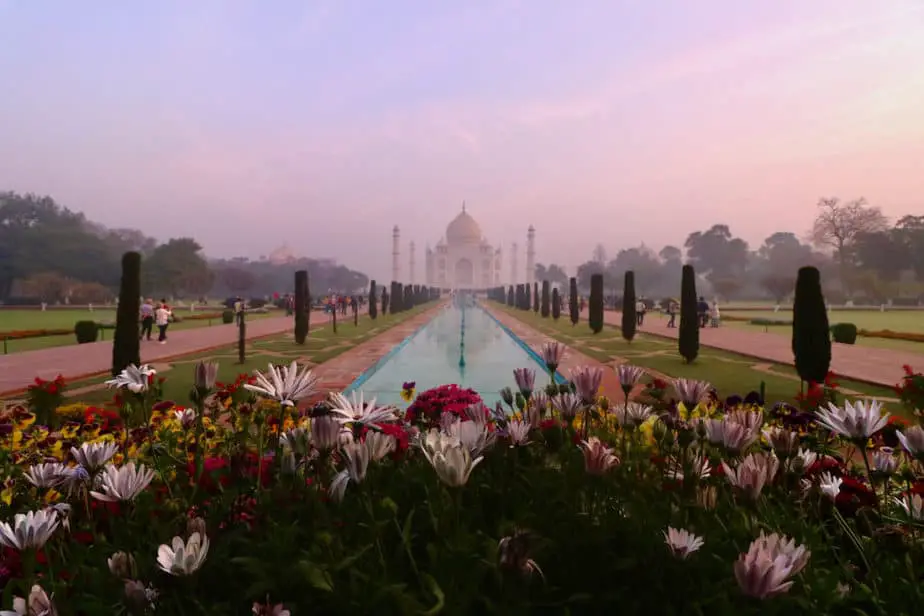
January kicks off the year with a burst of colors and festivities. Head to Agra to witness the magnificent Taj Mahal during sunrise, and while you’re there, explore the historic Agra Fort too. If you crave the desert’s allure, head west to the Rann of Kutch for the Rann Utsav, where the salt marshes transform into a cultural wonderland.
Best Festival in January in India: Head south to Chennai and Tamil Nadu for the Pongal Festival. It is a celebration of the harvest!
February: Love and Festivities
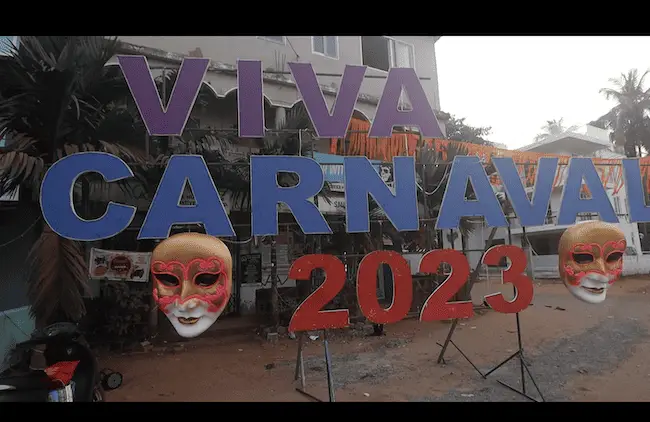
Ah, February the month of love and merriment! Spend Valentine’s Day in Jaipur, the Pink City, and be mesmerized by its majestic palaces and forts. If you’d rather party than swoon, Goa awaits you with its vibrant beach festivals and thrilling water sports.
Best Festival in February in India: Goa’s Carnival often hits around this time, offering you the chance to dance in the streets with locals as parades pass by.
March: Embrace the Spring
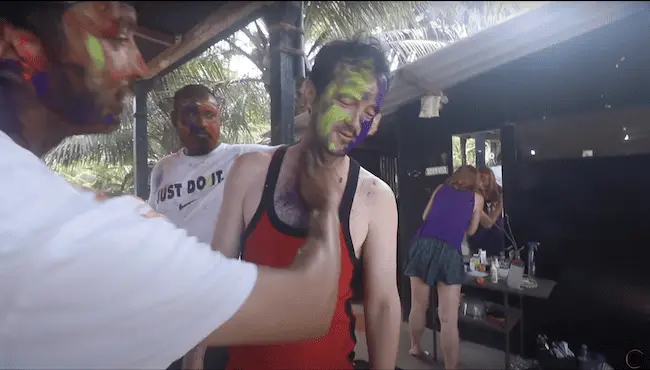
As the winter chill bids farewell, March welcomes you pleasantly. Head to Dharamshala in Himachal Pradesh, where the serenity of the Dalai Lama’s residence combines with the beautiful weather for a soul-soothing experience. Visit the historical attractions in Delhi, like the Red Fort and Humayun’s Tomb, as the crowds leave before the temperatures creep up too high.
Best Festival in March in India: Holi is also celebrated at this time, and Delhi’s a great time to mix with the crowds and the colors if you want a one-of-a-kind experience.
April: Revel in Traditions
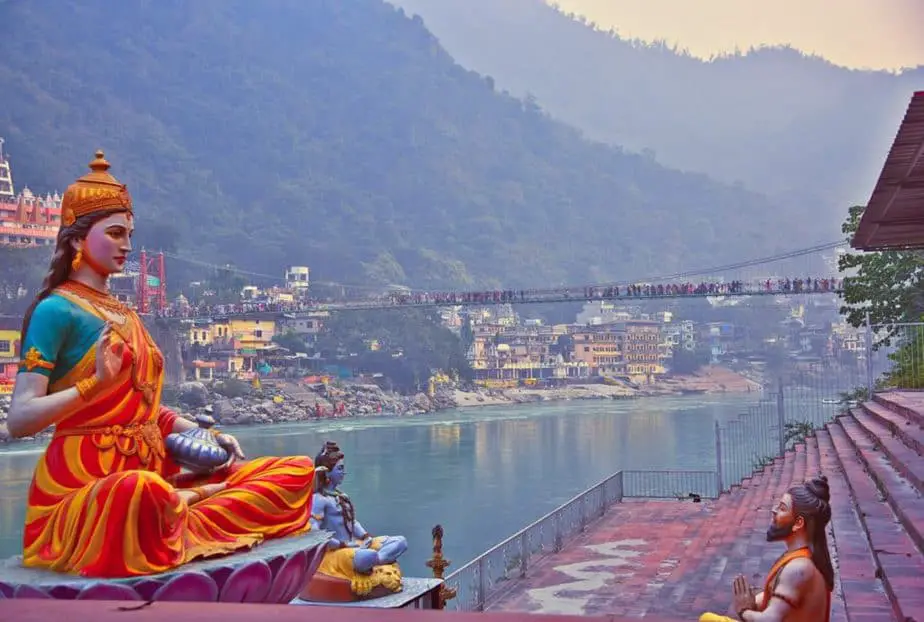
In April, Rishikesh, the Yoga Capital of the World, welcomes you with open arms. Engage in yoga and meditation retreats, and the Ganges River flows serenely. Visit Manali in Himachal Pradesh.
Or set sail for the Andaman Islands, where some of Asia’s more pristine beaches and mesmerizing marine life will leave you breathless. Most people don’t know this hotspot pristine is a part of India!
Best Festival in April in India: Varanasi’s Ram Navami celebrations will take you on a spiritual journey like no other.
May: Mountains and Serenity
May, the onset of summer, brings a chance to trek through the flowering meadows surrounding Dal Lake in Kashmir. Don’t forget to rent a houseboat for a few nights on the quieter Nigeen Lake. You can enjoy your morning tea listening to bullfrogs and looking at the snow-capped Himalayas.
Head to Munnar in Kerala for a calmer vibe, where lush tea gardens create a green paradise.
Best Festival in May in India: Kerala’s Thrissur Pooram festival will immerse you in a more peaceful cultural extravaganza of elephants, parasols, and drumming.
June: Islands and Coasts
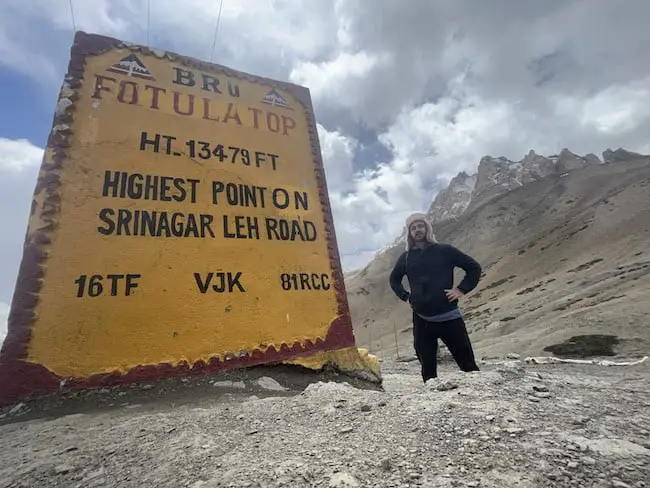
June has given the mountain passes a chance to thaw, allowing you to escape the heat in the cool embrace of Ladakh’s stunning landscapes. Attend Buddhist festivals or hire a motorcycle and immerse yourself in the mystical charm of this high-altitude wonderland.
Alternatively, get lost in the lush hills of Coorg, Karnataka, and discover the tranquility of coffee plantations.
Best Festival in June in India: Shimla’s Summer Festival celebrates the harvest and draws crowds in Himachal Pradesh’s capital.
July: Monsoon Magic
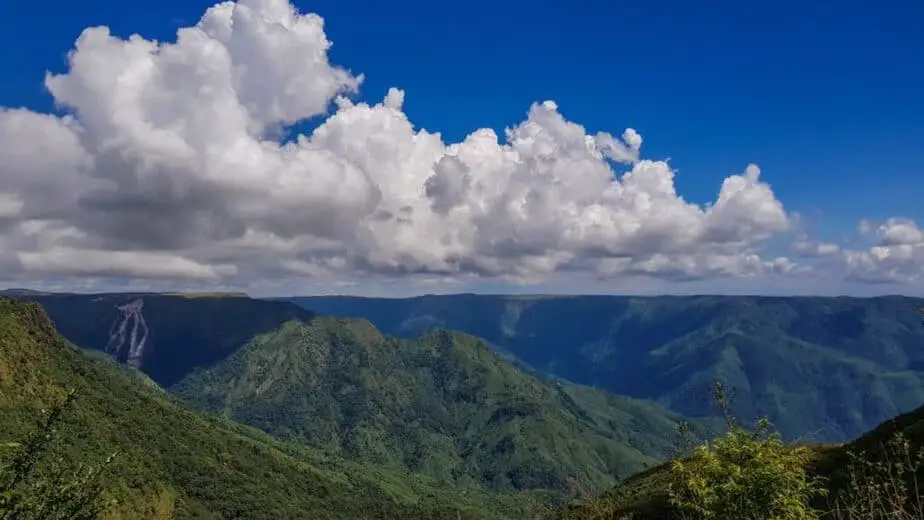
July brings monsoon magic to Shillong, “The Scotland of the East.” Embrace the rain and the beauty of cascading waterfalls amidst rolling hills. The Valley of Flowers in Uttarakhand is also blooming after some pre-monsoon showers have washed through. Come to experience the colorful blooms while surrounded by mountains.
Best Festival in July in India: Global Mango Festival in Delhi, where you can taste up to 500 of India’s famous mangoes.
August: Hills and Festivals
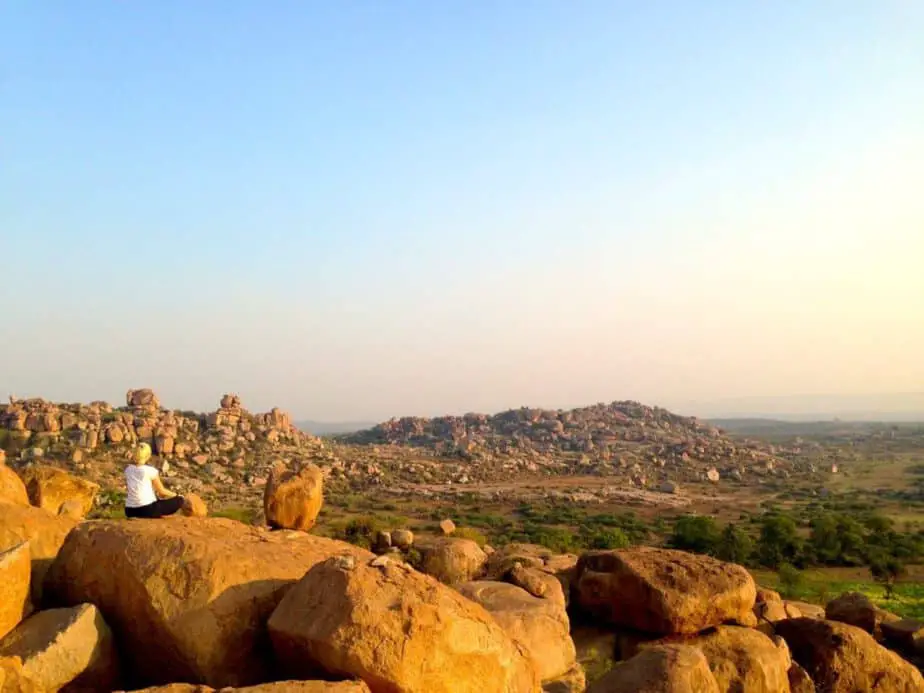
August offers a delightful escape to Kodaikanal in Tamil Nadu, where misty hills and stunning waterfalls will enchant you. Alternatively, explore the ancient ruins of Hampi, Karnataka, as the weather remains pleasant.
Best Festival in August in India: Experience the grand Teej festival in Udaipur, Rajasthan, where the city’s palaces light up with celebrations.
September: Festive Spirit
In September, Varanasi comes alive with the grand Ganga Mahotsav festival, where the Ganges River is adorned with twinkling lamps. Experience the traditional charm of Mysore during its grand Dasara celebrations.
Best Festival in September in India: Ganesh Chaturthi is celebrated in a big way in Mumbai. You can find smaller celebrations across Maharashtra, Karnataka and Telangana.
October: Camel Fairs and Durga Puja
October is a time for cultural extravaganzas! For an offbeat destination, head to the East Indian state of Arunachal Pradesh. Here you’ll find the village of Ziro for a slower-paced trip with rice paddies surrounding the town and the lush meadows growing after the monsoon. Darjeeling, the “queen of the hills” is another place to visit after India’s monsoon for views of lush valleys and some of the best tea in the world.
Best Festival in October in India: Kolkata dazzles with its grand Durga Puja celebrations, transforming the city into a colorful wonderland.
November: Majestic Monuments and Art Festivals
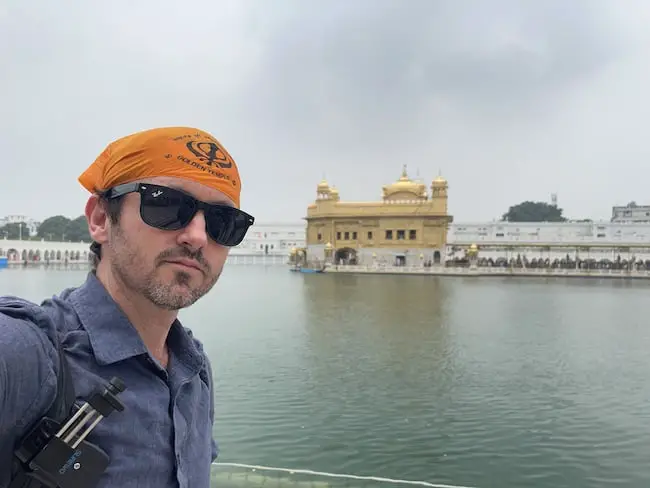
November invites you to Amritsar, Punjab, to visit the awe-inspiring Golden Temple and witness the spirited Wagah Border ceremony. In Mumbai, attend the Kala Ghoda Arts Festival and immerse yourself in India’s vibrant art scene.
Best Festival in November in India: Head to Pushkar, Rajasthan, for the famous Pushkar Camel Fair, where vibrant festivities await you.
December: Beaches and Music
December is the time for sun, sand, and celebrations in Goa! Embrace the Christmas and New Year festivities on the golden beaches. Alternatively, immerse yourself in the soulful music and dance performances of the Margazhi festival in Chennai.
Best Festival in December in India: Check out the Konark Dance Festival to watch local dancers wow you as you watch the sunset with the historical Sun Temple of Konark in the background.
FAQ
Which is the best month to visit India?
The best month to visit India is generally December. The weather is warm and sunny, with pleasant temperatures around 15-25 degrees Celsius (59-77 degrees Fahrenheit). You can head to Goa for the Christmas parties or Delhi to explore the historical attractions. January is also very popular. October and November or February and March have fewer tourists and pleasant weather. Head to the mountains or hill stations in April thru July for pleasant temperatures.
What is the tourist season in India?
The tourist season in India is typically from October to March when the weather is mild and sunny. This is the time of year when most tourists visit India, as the weather is ideal for sightseeing, exploring different cultures, and participating in outdoor activities. For mountainous destinations like Ladakh, you can head in May through July after the mountain passes have thawed.
Which month is coldest in India?
The coldest month in India is January. The average temperature in January ranges from 10-15 degrees Celsius (50-59 degrees Fahrenheit) in the northern states to 20-25 degrees Celsius (68-77 degrees Fahrenheit) in the southern states. The lowest temperatures occur in the Indian Himalayas, where the average temperature in January can be as low as -10 degrees Celsius (14 degrees Fahrenheit).
Which month is costly for Goa?
The most expensive month for Goa is December. This is because December is the peak tourist season in Goa, and the demand for accommodation, flights, and other services is high. In Goa, the weather is pleasant in December, with average temperatures ranging from 25-30 degrees Celsius (77-86 degrees Fahrenheit). Many festivals and events are held in Goa in December, such as the Christmas and New Year’s Eve celebrations.
Is Goa cheaper than Thailand?
Goa is significantly cheaper than Thailand.
- Accommodation: A hostel bed in Goa costs around ₹500 (US$6.50) per night, while a hostel bed in Thailand costs around ฿200 (US$6.30) per night.
- Food: A meal in a local restaurant in Goa costs around ₹100 (US$1.30), while a meal in a local restaurant in Thailand costs around ฿50 (US$1.60).
- Activities: A day trip to a nearby beach in Goa costs around ₹500 (US$6.50), while a day trip to a nearby beach in Thailand costs around ฿300 (US$9.90).
What is off-season in Goa?
The off-season in Goa is the monsoon season, which runs from June to September. During this time, the weather is hot and humid, with around 3 meters (9.8 feet) of rain. The beaches are also closed due to the rough seas. But prices are lower, crowds are nonexistent, and the forests are lush.
Final Thoughts
So there you have it, fellow travelers! India’s magic knows no bounds, but the timing of your visit can truly enhance your experience. Each month, from the majestic mountains to the sun-kissed beaches and the ancient temples to the modern cities, unveils a unique side of India’s kaleidoscope.
If you’re looking for a truly unforgettable travel experience, the best time to visit India is during the winter months of late November to early March. To avoid crowds, you can check out fall in October to November or spring in March or April, but the temperatures will climb.
Remember, whether you’re coming from America, Europe, Australia, or India, your journey to India will leave an indelible mark on your soul. Embrace the diversity, savor the culture, and prepare for a rollercoaster of emotions. And when you return, just like me, you’ll find yourself planning your next Indian adventure! Bon voyage, my friends!

